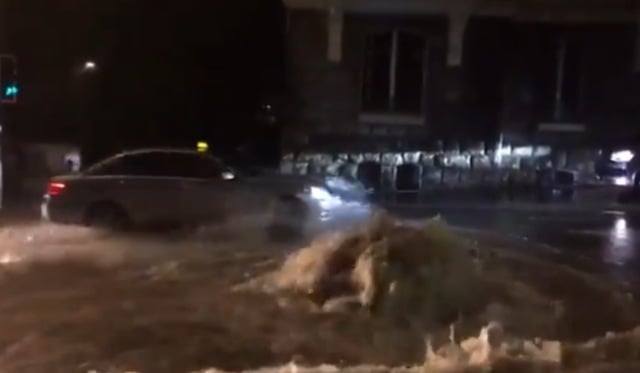Emergency services had received 500 calls by 3am on Tuesday morning as the rain affected roads, houses and train and bus lines.
#Lausanne, le 11 juin 2018, à 23 heures. pic.twitter.com/Bke3HRdlvj
— Philippe Reichen (@PhilippeReichen) June 12, 2018
Fortunately, there were no reports of injuries. But authorities have warned people to stay away from parks and other green areas because of the risk of falling trees.
Le jour où le haut de lausanne fut inondé… la route de berne ici #orage #lausanne #sallaz-sur-mer pic.twitter.com/2oNpu9pz3J
— Etienne Kocher (@kocher_et) June 11, 2018
SRF Meteo said Lausanne saw 41.1 millilitres of rainfall in just 10 minutes at 11pm on Monday – what could be a new Swiss record if it is confirmed. The previous 10-minute record was seen in Eschenz in Thurgau on August 2nd 2017.
Die #Regenmengen in den letzten 24 h: Vor allem in der #Romandie fiel teils viel Regen. Zum Vergleich: im ganzen Juni normalerweise um 100 mm. ^gf pic.twitter.com/i18vzug3VG
— SRF Meteo (@srfmeteo) June 12, 2018
Train services were operating as normal around Lake Geneva on Tuesday morning although there were some delays, Lausanne daily 24 Heures reported.
Lausanne by rain pic.twitter.com/D29MEbQvb2
— Alexi Sans S (@AlexiSansS) June 11, 2018




 Please whitelist us to continue reading.
Please whitelist us to continue reading.